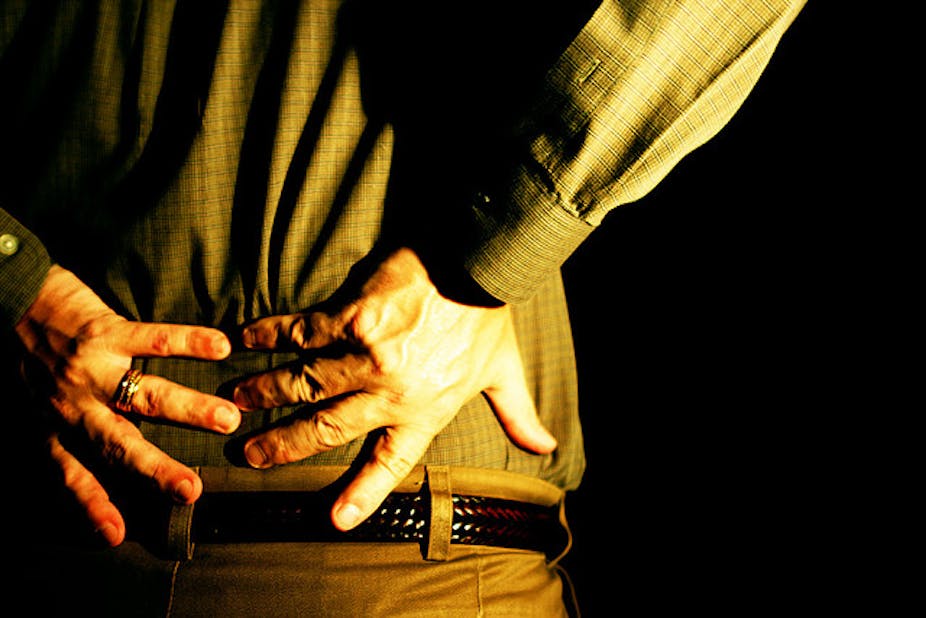Australians living with back problems are 2.5 times more likely to experience a depressive disorder than the wider population, according to a report released today by the government’s Australian Institute of Health and Welfare (AIHW).
One in 11 Australians had back problems in 2007-08, which related to the bones, joints, connective tissue, muscles and nerves of the back. This amounts to 1.8 million people.
Pain is the key symptom of back problems, with past studies estimating 86% of sufferers experienced pain one day a week and 14% lived with persistent pain.
According to today’s report, people with back problems were 1.8 times as likely to report an anxiety disorder than the wider population. They were also 1.3 times more likely to report a substance use disorder and 2.5 times more likely to experience an affective disorder, such as depression, bipolar affective disorder and mood disorders.
“Back problems are a common reason for pain among younger and middle-aged adults, but they can start early in life—between ages eight and ten,” the report said. Estimates indicate 70% to 90% of people suffer from lower back pain at some point in their lives.
Back problems can be caused by injury, poor posture, some genetic conditions and diseases such as osteoarthritis. Other factors such as age, fitness levels, weight and type of work may also increase the risk.
Orthopaedic surgeon and rheumatologist Associate Professor Markhus Melloh, from the Western Australian Institute for Medical Research and the University of Western Australia, said pain and mental health problems had a cause and effect relationship.
“About 50% of pain patients develop mental health issues after having chronic pain, and about 50% have mental health issues before the onset of a chronic pain episode,” he said.
Professor Melloh said it would be plausible that the stress of severe back pain influenced the mind and caused mental health issues. On the other hand, mental health issues could weaken the person’s ability to deal with health problems and, in turn, increase the severity of their pain and disability.
“In addition, people with mental health issues might be more sensitive to pain and have a lower pain threshold,” he said.
Dr Michael Vagg, pain specialist at Barwon Health and Clinical Senior Lecturer at Deakin University, said many patients recovered well after back pain but those who developed chronic pain required a different type treatment.
“In the pain management world, reducing disability and improving quality of life even if the pain is not reduced is a major goal,” he said.
“We have 30 years of high-quality evidence that most chronic pain sufferers don’t need to see a major reduction in pain to have useful improvements in their quality of life and mental health, as long as they have access to the most effective training in self-management techniques,” he said.
Dr Vagg said it was interesting the report showed no particular correlation between age, gender or socioeconomic status and back pain.
“It is as likely to happen to an accountant as it is to a nurse or a brickie. It is prevalent at all ages from teens to old age. It occurs at the same rate in the outback as well as in the cities,” he said.

